Valley-Westside express bus is a go
October 1, 2014
Taking advantage of those brand-new 405 carpool lanes, Metro later this year will launch an express bus through the Sepulveda Pass, offering transit riders on both sides of the hill a speedier way through one of L.A.’s gnarliest commuting challenges.
On December 15, Line 788 will begin offering express nonstop service from UCLA in Westwood to the Orange Line in the San Fernando Valley. It then will continue north on Van Nuys Boulevard, stopping at major intersections on its way to Panorama City. Because it will connect to the Orange Line rapid transit busway, the line will give people in places like North Hollywood, Woodland Hills and Chatsworth a faster path to the Westside.
According to Jon Hillmer, Metro’s executive officer in charge of bus service planning and scheduling, the new line is projected to save a lot of time for commuters now riding other lines.
“We’re being very conservative, but from end to end we are looking at 20 minute time savings in each direction,” he said.
Service through the Sepulveda Pass currently is offered via Line 761, but the buses are infamously slow, having to navigate traffic and wait for stoplights along Sepulveda Boulevard. It currently takes more than an hour to get from one side of the hill to the other in normal traffic.
Initially, express buses will depart every 20 minutes on weekdays during peak traffic periods—from 5:30 a.m. to 9:30 a.m. and 3:30 p.m. to 7 p.m. Hillmer believes the line will draw a lot of riders in short order. If that’s the case, the frequency of buses will be increased and more daytime hours will be added. “If this gets to be very popular and we have overloads, we will add service very quickly,” Hillmer said.
The line could prove particularly useful for UCLA students, who qualify for reduced fares from Metro. The university also subsidizes at least 50% of transit costs with six local agencies for students and employees.
Using the 405 Project’s carpool lanes for buses was first suggested last fall at two Local Service Councils—appointed bodies that give Metro a regional perspective during the annual process of adjusting bus routes.
“The public was very supportive of the idea,” Hillmer said. “It was virtually unanimous that there was a need for nonstop service between the Valley and the Westside.”
Then Metro’s Board of Directors in May requested that the agency prepare the studies and tests needed to launch the service. One potential roadblock was whether buses could maintain highway speeds while climbing the steep hill that separates the Valley and the Westside. Fortunately, Hillmer said, Metro’s 45-foot coaches—which are built with lightweight composite sides—proved able to maintain speeds of at least 55 miles per hour in each direction.
Further down the road, Metro plans to extend the express line south to the Sepulveda station of the Expo Line when the final phase of the light rail project opens in January, 2016. That will give people another option to reach destinations such as Santa Monica without having to deal with driving, not to mention the city’s notoriously difficult parking.
Line 788 may soon get a catchier name. Today, at Metro’s Executive Management Committee meeting, Supervisor Zev Yaroslavsky and his Metro board colleagues Paul Krekorian and Pam O’Connor introduced a motion to begin promoting the line as the “Valley-Westside Express.” That proposal will go before the agency’s full Board of Directors next Thursday, September 25.
Whatever it’s called, Hillmer said the line will give residents of a broad area a new way to get from the Valley to the Westside—and vice versa.
“This will be a very attractive service because it’s fast and easy to use,” Hillmer said. “Because it interfaces easily with the Orange Line, people who have destinations on either side of the 405 will have faster access over the hill.”
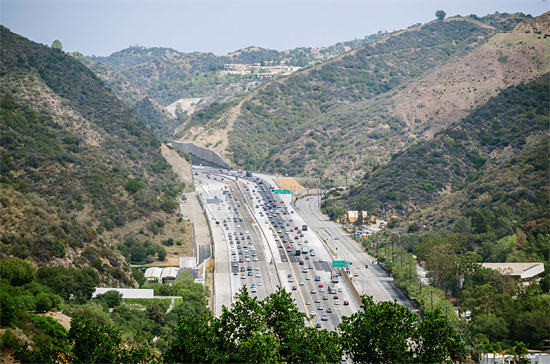
The bus line will roll though the Sepulvenda Pass via the new carpool lanes. Photo/Metro's The Source
Posted 9/18/14
This tunnel’s made for singin’
October 1, 2014
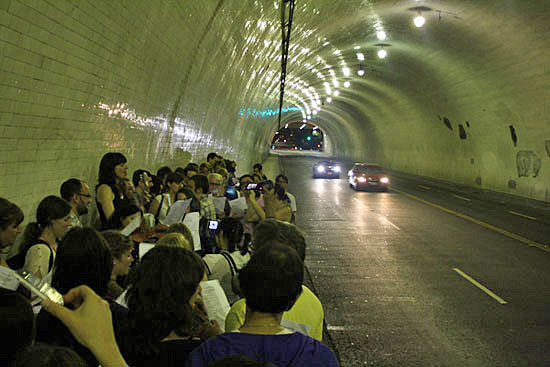
This tunnel, minus the cars, will be the site of one of CicLAvia's more unusual entertainment offerings.
If you’ve ever made your way through the 2nd Street tunnel in downtown Los Angeles, you know that it can be drab, grey, even a little spooky.
But this Sunday, thanks to the transformative car-free magic that is CicLAvia, the tunnel will turn into something else: a musical performance space echoing with the sounds of pedestrian- and cyclist-friendly numbers like “These Boots are Made for Walkin,’ ” Queen’s “Bicycle Race” and “Walkin’ on Sunshine.”
A group called Public Space Singalong is preparing to serenade those who pass through the tunnel—on bike or on foot—with lively tunes from the 1950s through the 1980s, as musicians provide accompaniment on guitar, violin, snare drum and accordion.
Jessica Cowley, the group’s founder, said everyone is welcome to join in—musical talent optional.
“It’s an opportunity to make music with other people in a really low-stakes situation,” Cowley said. “Everything gets lost when there are 40 people. You don’t even have to sing well.”
Cowley, an urban planner by trade, started the group in 2013 to use public spaces in a new way and bring back what she calls a lost tradition—creating music with the community. They’ve sung in the 2nd Street tunnel before, but this time the slower pace of bicycles and walkers should encourage more people to stop and have a listen. The pedestrian group Los Angeles Walks is coordinating their outing with the singers, and will arrive at noon to join in.
Public song is just one of the activities planned for Sunday’s open streets extravaganza. Bike safety classes, the Festival of Philippine Arts and Culture, interactive poetry, live music, and rock climbing are all part of the day’s offerings, which will be held throughout the event’s sprawling ”Heart of L.A.” route.
Food will be prominently featured, too. In August, CicLAvia’s organizers got mouths watering in advance with a food photo contest that featured dishes from eateries along the route. In addition to the restaurants, attendees can get their grub on at gourmet food trucks, which will be stationed at event “hubs,” or at the Historic Core Farmers Market, which is located nearby.
It all takes place from 9 a.m. to 4 p.m. this Sunday, October 5. This will be the 10th edition of CicLAvia, which regularly draws crowds in excess of 100,000. It won’t be the last, though—on December 7, the event heads to South L.A. before making its first-ever trip to the San Fernando Valley in the spring of 2015.
Posted 10/1/14
L.A. County’s animal magnetism
October 1, 2014
It’s a jungle out there.
Also a savanna, a desert and occasionally a rainforest.
The recent capture of a rare white cobra by L.A. County Animal Care and Control officers made headlines around the world as people marveled at the mysterious appearance of a dangerous creature more commonly associated with the Indian subcontinent than with Southern California suburbia.
But the cobra caper—a first for the department—was only the latest chapter in a long-running saga of exotic animal encounters in and around the nation’s most populous county.
“About a year ago, we had a very aggressive camel that attacked a man,” recalled Marcia Mayeda, the department’s director. “It was a Bactrian camel, the kind with the two humps.” The camel, named Wally, “belonged to a person who uses him for media shoots, movies and so forth. He had escaped from his pen outside of Palmdale, and was wandering the streets.”
And Wally has plenty of company.
“We get everything,” Mayeda said. “Every kind of reptile—caimans, crocodiles, alligators. People get these animals as pets and they get too big and too dangerous and then they can’t handle them anymore. They usually abandon them because they don’t know what else to do with them. The same with very large snakes.”
Beyond ill-advised household pets gone wild, Southern California disasters also smoke out some unlikely creatures.
“When the fires happen and we have to evacuate large numbers of animals, we go expecting to get horses, ponies or goats, or sometimes cattle. But there was a time there was a whole troupe of monkeys that needed to be removed from somebody’s property,” Mayeda said. “During the Station Fire, there was a man who had an African elephant and a rhinoceros and was asking us for assistance.” (He ended up finding another ride out of harm’s way for his animals.)
Over the past five years, the department has logged 202 tortoises, 125 lizards, 97 parrots, 24 gophers and 23 chinchillas.
Thirteen tarantulas and an equal number of frogs have passed through the system, along with 60 fish, 17 bobcats, 5 scorpions, three badgers and a weasel.
Animal control officers also have run into enough out-of-the-ordinary critters to populate a good-sized ark—including two alligators, two of the alligator-like caimans, two wolves and two muskrats—as well as a few animals with vocabulary-challenging names (like the serval, a spotted wild cat.)
It all happens against a backdrop of the more routine encounters that keep Los Angeles County shelters busy day in and day out.
While cobras, tarantulas, wolves and their ilk are classified as “other,” their numbers are dwarfed by the sheer number of daily encounters with dogs and cats. In fiscal 2013-14, for example, 6,362 animals categorized as “other” passed through county shelters, compared to 37,535 dogs and 28,027 cats. (Cougars and bears, which also show up with some frequency, are the province of the state Department of Fish and Wildlife.)
Rare beasts have been found in virtually every corner of the county. The Antelope Valley is a particularly rich source.
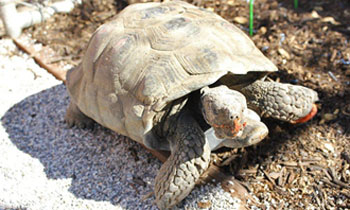
Reptiles, including this Sulcata tortoise, are no strangers to Los Angeles County animal control officers.
“You never know what people have up there,” Mayeda said. “They’re out in the middle of nowhere, they get all sorts of exotic animals and they’re zoned for it, too. A lot of the companies that provide animals for film and TV are located up there.”
Then there’s Thousand Oaks, a Ventura County community which contracts with the L.A. County Department of Animal Care and Control for services. Not only was the ordinarily quiet area the site of the Great Cobra Hunt; recently a capybara, known as the world’s largest rodent and weighing in at up to 100 pounds, turned up there as well.
There’s no designated exotic animal handler on the county staff. “Whoever catches the call, they’re going to have to figure it out or call for help,” Mayeda said. “Nobody’s ever handled a cobra before. We’ve handled plenty of rattlesnakes, but cobras are different—faster and a lot more dangerous.”
The white cobra is now safely under quarantine at the San Diego Zoo. And, in case you’re wondering, Wally the rogue camel has been relocated to a more secure facility—in Ventura County.
Posted 10/1/14
New counsel has taxing background
September 26, 2014
After his appointment this week as Los Angeles County Counsel, Mark Saladino braced for the lawyer jokes. He knows only too well the consequences of assuming a less-than-crowd-pleasing job title after serving for 16 years as the county’s Treasurer and Tax Collector.
“The worst reaction I ever had was a gentleman telling me, ‘You’re the tax collector? In the Bible, you’re lower than prostitutes,’” Saladino, 56, said with a laugh.
Despite its perceived notoriety, Saladino is excited about becoming the County Counsel and taking over a public law office that has had three “permanent” and two “interim” leaders just in the last five years because of back-to-back retirements.
The Board of Supervisors approved his appointment Tuesday and will administer his oath of office on October 15. Saladino will supervise a staff of about 600 — half of them lawyers — and receive an annual salary of $288,915.
“I think one of the biggest challenges facing the Office of County Counsel is management,” Saladino said in an interview Tuesday. “One of my distinguishing characteristics is that I’ve been a department head for 16 years so I’m familiar with all the administrative functions of county departments, and most lawyers don’t get that kind of background.”
During his tenure at the Office of the Treasurer and Tax Collector, Saladino made operations more efficient by providing taxpayers with online payment options and by automating various processes.
“Our department suffered significant budget cuts during the recession, and the only way we could keep up with our increasing workload was to do more with fewer people,” he said.
“It used to be that during tax time, we would hire more than a dozen people just to open envelopes and process checks, and then we had armored cars take those checks to the bank,” he added. “Now, the mail is opened by machines and checks are deposited electronically, which is faster and safer.”
Saladino also took credit for helping to boost the county’s credit rating in the midst of the recession, when several jurisdictions nationwide went bankrupt.
“Our board and CEO exercised the budget discipline necessary during that very difficult time,” he said. “My role was to make sure that our investments were sound.”
Saladino holds a Bachelor of Science degree in Finance with High Honors from the University of Illinois, and a Juris Doctor degree from New York University. What he doesn’t have is recent legal experience.
Throughout the 80’s and much of the 90’s, Saladino worked as an attorney for Hawkins, Delafield & Wood in New York City; Jones Day, Reavis & Pogue in Los Angeles; and the Office of County Counsel — the same one he’ll now oversee.
But he hasn’t practiced law since becoming Treasurer and Tax Collector in 1998. According to the State Bar of California, Saladino returned to active status only this June.
Still, once a lawyer, always a lawyer.
“You don’t forget it,” Saladino said. “You don’t cease being a lawyer simply because you’re not actively practicing. I don’t think it’ll be a very big challenge to get back up to speed.”
As County Counsel, he will be responsible for providing legal advice to the board and for managing an office that serve as in-house counsel for the county’s many departments and agencies.
His lawyers could be called upon for a wide variety of duties, everything from defending Sheriff’s Department deputies accused of abuse to helping the Department of Health Services implement the Affordable Care Act.
Saladino believes helping to establish the Office of Child Protection—and figuring out how to keep the mentally ill out of jail and on a path to recovery—will be among his most important tasks.
“The District Attorney has a new initiative to divert mentally ill inmates away from incarceration into treatment and getting that right is going to be extremely important,” Saladino said. “I think the County Counsel will have a very important role to play in that process.”
Saladino, whose father and sister are both attorneys, said he’s looking forward to practicing law again. Returning to the Office of the County Counsel, he said, is like “going back home.”
Posted 9/26/14
Wanna vote? Stay tuned
September 26, 2014
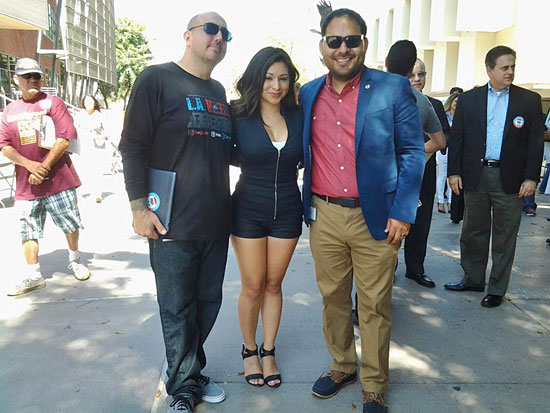
Rikki Martinez of Power 106 with Registrar-Recorder staffers Efrain Escobedo, right, and Phillip Verbera.
Power 106 may be where hip hop lives. But it’s also home to a big part of Los Angeles County’s strategy for getting new voters into the booth.
Yes, that was Power 106 radio personality Rikki Martinez posing for photos this week during a Cal State L.A. voter registration event with Registrar-Recorder staff, including the boss, Dean Logan.
“Ain’t no way I’m go’n let OUR voice go unheard,” Martinez said in her National Voter Registration Day tweet to 33,000-plus Twitter followers (including Logan.)
Don’t touch that dial: it’s a brand new era in voter outreach in L.A. County.
Buoyed by successful partnerships with radio stations during the last presidential election year, 2012, the Registrar-Recorder is seeking to turn things up a notch with the approach of mid-term elections—traditionally a tougher time to engage and motivate would-be participants in the electoral process.
Efrain Escobedo, who helped pioneer the department’s work with radio stations two years ago, said that traditional models—like setting up voter registration tables at events—just aren’t enough to get the job done anymore.
With more than 1 million potential voters in the county still unregistered, he said, it makes sense to turn to radio, with its strong built-in relationships across a variety of platforms. Beyond listening in the car during L.A.’s endless rush hours, audiences stream radio programming on their computers at work and home, while using their cell phones to call in for contests or text in for ticket giveaways.
“The way people live their lives today has changed. Their devices are a central part of how they live their lives and people use media in a much different way than they used to,” said Escobedo, the Registrar-Recorder’s manager of governmental and legislative affairs. “We’re probably not the best messengers. So we identified radio stations to be a medium that is all about having a direct relationship with the listener.”
Tactics like text-back campaigns, in which people vying for free concert tickets get a text message reply urging them to register online, already have proven their value.
Now it’s time to go deeper.
“This year, we’re actually sitting down together with station talent and all of their editors and content managers” to come up with ways to tailor the voting message to each station’s unique audience, Escobedo said.
Although the county is investing $250,000 in the program leading up to the Nov. 4 election, “this is not an ad buy,” Escobedo said. Rather, the idea is “to foster a culture of civic participation within the station” and let in-house teams take the lead on getting the message across.
For example, one of the participating stations, Super Estrella 107.1, will be leveraging the bi-cultural stories of its on-air personalities to create videos about why voting is personally important to them.
“They’re also tapping back to this notion that voting is power and that the Latino community has gained power by voting,” Escobedo said. “They’re showcasing all of these key icons in the Latino community, from Edward James Olmos to Jaime Escalante to Sonia Sotomayor, finding motivational quotes and then they’re reminding people, ‘Hey, we stand on their shoulders, we have to continue to vote to keep this legacy going, so go out and vote.’ ”
While key targets include young Latinos and African Americans of voting age, the media partnerships are across a broad spectrum—from K-EARTH 101.1 and KROQ 106.7 to Jose 97.5-103.1 and television channels in Mandarin, Korean, Filipino and Japanese.
While this election season presents its challenges, voting officials have one distinct advantage this time around: online registration is now well established in California. (You can do it right now, by clicking here.)
After it first was signed into law by Gov. Jerry Brown in 2012, however, voting officials had just 28 days to capitalize on the new mode of signing up to vote before the close of registration. They scrambled, along with their radio partners, to make the most of the short window of time available.
“In those 28 days, 250,000 people registered to vote online [in L.A. County.] Sixty percent of all the people who registered to vote online in that period were under the age of 30—which is the primary demographic for stations like Super Estrella and Power 106,” Escobedo said. “So I’d like to think that we were a huge driver in that. The last day to register to vote, we did a huge push with the stations…That day alone, we had 90,000 people register to vote.”
This year, registration closes on Oct. 20. As that day approaches, look for more events like the one that drew Rikki Martinez to Cal State L.A.—where some 300 students took advantage of the festivities to sign up to vote—along with a stream of online and on-air pitches that are anything but conventional.
“Because no one’s going to come to an event to register to vote. They’re going to come to be inspired,” Escobedo said. “We truly believe that we’ve found the winning formula.”
Posted 9/26/14
Time to grin and bear it for CEO
September 25, 2014
This is the story of Bill and the three bears.
Last Sunday afternoon, the county’s chief executive officer was pursing his usual weekend pasttime—terracing his sprawling, hilly backyard with bricks—9,000 of them , so far—when his wife bolted out of the house. She announced that three sheriff patrol cars were blocking the driveway and that officials from the state Department of Fish and Wildlife were there, too.
Why the commotion? A mother bear and two cubs had shimmied up an oak tree in front of Fujioka’s house in the tiny city of Bradbury, nestled at the base of the San Gabriel Mountains near Monrovia. They’d been spotted on a busy street in the area and were being guided back towards the mountains by authorities when the parched and hungry animals decided to hole up at Fujioka’s place.
“Holy smokes,” Fujioka exclaimed as he saw for himself what was unfolding out front.
Wildlife officials told Fujioka that because of the severity of the drought, the bears had wandered from the mountains looking for food and water. “It was sad,” Fujioka said. “The mother’s fur looked bad and the cubs looked malnourished.”
At one point, Fujioka said, he started walking towards the tree when the mama bear “started hitting the branches.”
“Back up!” a wildlife official told Fujioka. “She’s warning you. If you keep going, she’ll come down that tree and charge you.”
After more than an hour, the bears did climb down but quickly jumped Fujioka’s fence and high-tailed it into another tree, a birch that was even closer to the house. “From my bedroom window,” the CEO recalled, “I could look at the bear eyeball-to-eyeball.”
By now, the news crews had arrived, hoping for footage of the bears’ descent.
As they waited, a reporter for KABC-TV interviewed Fujioka, who admittedly was “as filthy as could be” from his backyard brick work.
Usually when he makes the news, Fujioka is seen unveiling the county’s budget or taking part in other official business. This time, his name was misspelled as “Fugioka” and there was no mention of his position with the county. He was just another neighborhood man in the news. And that neighborhood is no stranger to attracting media attention for its occasional bear visitors. A few years ago, one made headlines for taking a dip in a resident’s hot tub.
On Sunday, in the end, the bears waited out almost everyone—the deputies, the fish and wildlife people, even the news hounds. Everyone except Fujioka and his wife, Darlene Kuba. After more than two hours in the branches, at about 4 p.m. the trio inched down and literally hit the bricks, ambling across Fujioka’s prized, terraced backyard and then back into the hills—leaving Darlene as the lone chronicler of the moment. Here are some of her pictures of the bears on the lam:
Piloting a path away from jail
September 18, 2014
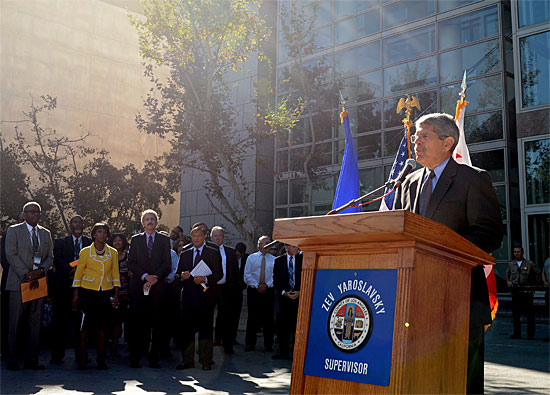
Supervisor Zev Yaroslavsky announces the creation of a new jail diversion program, with Dist. Atty. Jackie Lacey, in the yellow jacket, among those in attendance.
Confronting a jail system packed with rising numbers of mentally ill inmates, an unprecedented coalition of criminal justice and social services agencies have rallied behind an initiative that stresses rehabilitation over punishment for certain low-risk offenders and holds out the promise of reduced recidivism.
Eleven agencies—including the Superior Court and the offices of the district attorney, city attorney and public defender—are collaborating in the pilot project, orchestrated by Los Angeles County Supervisor Zev Yaroslavsky as a way to provide chronically homeless and severely mentally ill individuals with a carefully proscribed path out of jail and into recovery.
“I believe this is a more intelligent way of dealing with people like this, rather than putting them in jail, which is a far more expensive and less effective way to address mental health issues,” Yaroslavsky said during a Wednesday news conference at the Van Nuys courthouse.
“This program is going to start here, at the Van Nuys Courthouse and at the San Fernando Courthouse, but it could easily be placed in Compton, in Pomona, in Inglewood, Santa Monica, anywhere,” said Yaroslavsky, who allocated nearly half of the initiative’s $750,000 price tag from his district’s discretionary funding.
Among those who stood alongside the supervisor for Wednesday’s announcement was Los Angeles County Dist. Atty. Jackie Lacey. In recent months, she has become the leading proponent of alternative sentencing for low-risk mentally ill offenders, whom she says have little chance of success inside the county’s overcrowded lockup.
Lacey called the incarceration of such defendants, who suffer from bipolar disorder, schizophrenia, post-traumatic stress syndrome and other mental illnesses, an “unconscionable waste of human life and money.”
The new Third District Diversion and Alternative Sentencing Program will, under a series of specific conditions, provide 50 eligible participants with a variety of wraparound services—including permanent supportive housing and mental health treatment—intended to keep them off the streets, out of jails and emergency rooms, and put them on a path to self-sufficiency. Those services will be arranged by the non-profit San Fernando Valley Community Mental Health Center.
Under the program’s protocols, prosecutors and public defenders will collaborate with psychologists to identify severely mentally ill—but nonviolent—chronically homeless individuals eligible for the program’s shelter, counseling, medication management and other services, including employment and vocational assistance. A judge must approve the defendant’s participation.
Eligible misdemeanants will undergo treatment for 90 days and pay restitution, if necessary. Charges will be dismissed after the successful completion of the program. Otherwise, the criminal case will proceed.
Eligible felons, meanwhile, will be required to plead guilty or no contest to the charges against them and undergo treatment for 18 months, with case managers and probation officers regularly checking their progress. They also will have to pay restitution.
“What I like about this program is it does have a lot of leverage with participants,” said Adrian Sheff, director of adult and older adult programs at the San Fernando Valley Community Mental Health Center. “They’re not just being diverted from jail and told to bring a note back from their treatment provider to say they completed the program. Instead, there are ongoing reports, feedback with the court and probation and other measures to ensure they won’t wind up back in jail or commit new offenses.”
City Atty. Mike Feuer, whose office prosecutes misdemeanors, agreed during Wednesday’s event that jail is the wrong place to deal with severe mental illness. He said the pilot program’s more “innovative and humane” approach will keep neighborhoods safer.
Said Superior Court Presiding Judge David Wesley: “It is sometimes in the best interests of the public, and of mentally ill offenders, to divert someone from the criminal justice system.”
Los Angeles County Mental Health Director Marvin Southward said he hopes the pilot program marks the beginning of lasting reforms in the way the criminal justice system treats the severely mentally ill and chronically homeless.
“I think we have to show that by investing in an intensive program like this, we could produce good enough outcomes and save enough money that it’s worth spreading this model to other places.”
Posted 9/18/14
Trouble at sea
September 18, 2014
A punishing heat wave sent thousands of people fleeing to the beach this week, but many who tried to cool off in the ocean found themselves in hot water instead.
The Los Angeles County Fire Department’s Lifeguard Division saved more than 1,000 swimmers and surfers swept up by rip currents and other hazards over a five-day period when temperatures peaked at 107 degrees in the San Fernando Valley.
This brought the lifeguards’ total number of rescues up to about 12,000 since January. That’s their third highest tally ever in a single year — with three months still remaining in 2014.
Acting Chief Lifeguard Steve Moseley attributes the spike to a rare confluence of factors: A surge in beach attendance driven by extended periods of unseasonably hot weather, more frequent occurrences of high surf and a warmer ocean.
“All of these contributing factors have combined to create one of the busiest years in recent memory for the Lifeguard Division,” Moseley said.
To date, beach attendance has hit 61 million — well past the 20-year average of 54 million and on pace to exceed last year’s 71 million.
“It’s been so hot inland that everybody’s coming to the beach, even on a Tuesday or a Wednesday,” said Ocean Lifeguard Specialist A.J. Lester. “And because ocean temperatures are warmer, everybody’s staying in the water all day long.” (Tips on staying safe on the beach are here.)
Jet Propulsion Laboratory climatologist and oceanographer Bill Patzert said swimmers and surfers have been particularly vulnerable to being swept away by rip currents, and falling into deep grooves on the ocean floor.
He explained several hurricanes and tropical storms spawned by El Nino conditions in the equatorial Pacific scored the ocean floor, leaving uneven contours.
“The county’s south-facing beaches have been hit with big waves, almost week after week,” Patzert said. “Hurricane Norbert is breaking up, but we have yet another one forming now.
“Because these tend to change the configuration of the ocean bottom,” he added, “people very easily can get into water over their heads in these rip currents.”
Lester said the county employs 200 full-time and 700 part-time lifeguards and has “needed every one of them.” He himself rescued 18 people in a single day last spring, including a pair of boogie-boarding teenagers swept away by rip currents.
“The sister was screaming blood-curdling screams because her brother had fallen off his board and, basically, he was drowning,” Lester said. “I wrapped them around my rescue can but a wave slammed us down to the bottom, and when we got back to the surface, we were all spitting up water.”
Moments after he brought the siblings ashore, he had to dive back in for yet another double rescue. “Then I returned to my tower and parked my truck, but before I could even dry off, we had to pull more people out,” Lester said.
“It’s gotten to the point sometimes when we’re going from one rescue to the next,” Lester said. Still, he added, “There’s nothing more rewarding than completing a rescue, coming back to the beach, and watching those kids run back to their parents, and they’re all hugging each other, and thanking us.”
Section Chief Chris Linkletter said lifeguards also have racked up 1 million “preventions.”
“This means we have prevented that number of people from either becoming rescues or getting into a hazardous situation,” she said.
Amid all the rescues, however, there also have been mishaps.
On Monday, a lifeguard driving a pickup truck back to his tower accidentally ran over a sunbather, who survived but sustained fractures and lacerations to her internal organs.
It was the second such accident this year. In May, another sunbather was hit by a county beach maintenance vehicle.
Posted 9/18/14
A big legacy, no bones about it
September 15, 2014
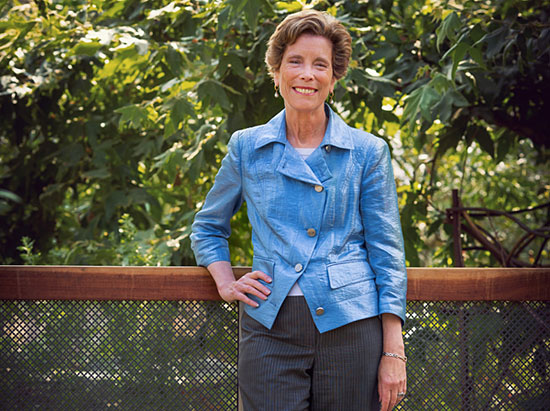
Pisano in the county museum's nature gardens, where she loves to walk. "The big bonus is those gardens used to be parking lots," she says. Photo/Christina Gandolfo
Over the past 13 years, Jane Pisano has presided over a dramatic transformation of the county’s venerable Natural History Museum.
Huge emblems of her accomplishments are visible all over the museum, from the striking glass entry pavilion featuring a suspended 65-foot fin whale to the trio of fearsome young T. rexes showcased in the new Dinosaur Hall.
But those show-stoppers don’t tell the whole story of the NHM as reimagined on Pisano’s watch.
With her recent announcement that she will be retiring from her post once a successor is named, it’s time to take a spin through some of the exhibits and artifacts—large and small—that have meant the most to Pisano over the years.
Here are a few of her favorite things—from a buzzed about “hotel” in the museum’s gardens to a stained glass window with a trans-generational backstory.
A really big sea lion
“There are parts of this museum that I just love because my grandchildren love ‘em,” Pisano says—like the dioramas. “My favorite is an enormous sea lion that is in the North American Mammal Hall and I’ve never seen one as big in nature but he looks like he could be almost anywhere on the California coast, preening and proud and clearly the biggest one around. I love the California coast so this one has special appeal to me.”
All that glitters
“I love the gold exhibit in the Gem Hall because it tells this wonderful story of California gold and the Gold Rush. You can kind of lose yourself in the abundance of it. And the story is so compelling. Almost all that gold, if not all of it, comes from California mines.”
The case of the pregnant plesiosaur
This fossil, between 72 million and 78 million years old and now residing in the museum’s Dinosaur Hall, “encapsulates in one object all of the things that we do here,” Pisano says. Not only does the fossil showcase groundbreaking findings by museum scientists but it also comes with some gee-whiz factoids. (Who knew that newborn plesiosaurs came into the world at 40% of the mother’s size?)
A whale of an early mammal
This 52-million-year-old Pakicetus skeleton in the Age of Mammals exhibit, which is seen on the left above, is—believe it or not—“a close relative of the modern whale,” Pisano says. The creature probably spent a lot of its time in the water, like the hippo. “It really shows that the early mammals, after the age of dinosaurs, adapted in search of food.”
The bee hotel
“I love, love walking in the garden and one of my favorite places to check is the Bee Hotel. You think you know about nature because it’s all around us, but when you go to the nature gardens, you just look and you see in a new and different way.”
Grandson to the rescue
When the 101-year-old museum was undergoing renovation, the stained glass window that crowns the Haaga Family Rotunda was showing signs of its age. “We built a platform there, and the grandson of the guy who designed and installed that window came and cleaned it and fixed it, reconnected it in places where gravity was really jeopardizing the glass. I never look at that without thinking about the whole process of saving it and preserving it.”
Where kids turn into scientists
“I love everything in the Nature Lab. One of my very favorite things is to walk through the Nature Lab in the middle of the day and see the children gathered around the table where our scientists are working, engaged and interested and asking questions about what they’re doing. I love that.”
Posted 9/15/14




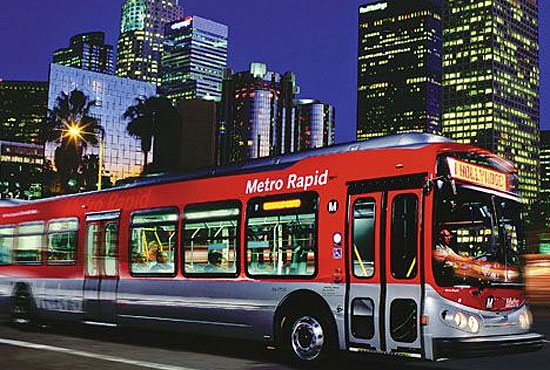
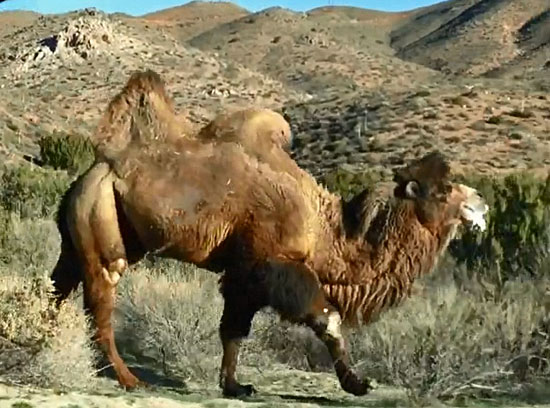
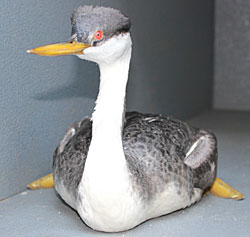
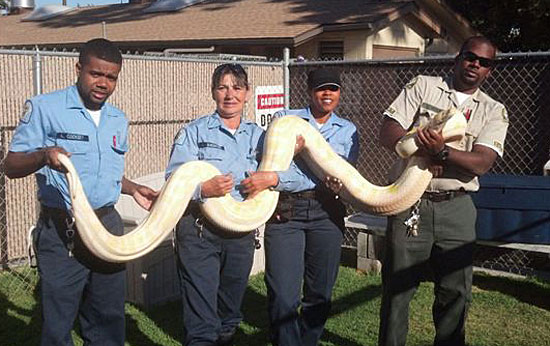




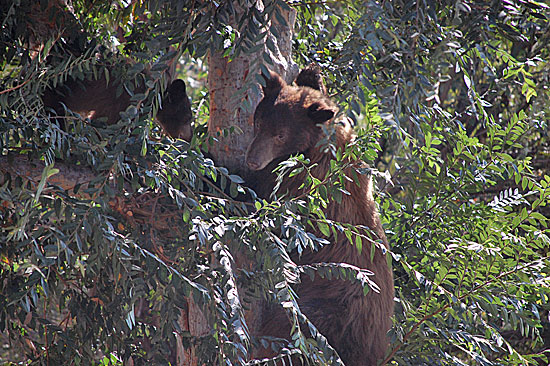

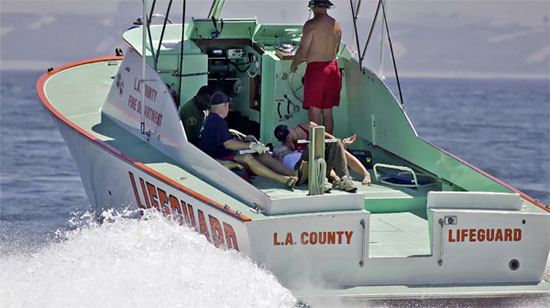
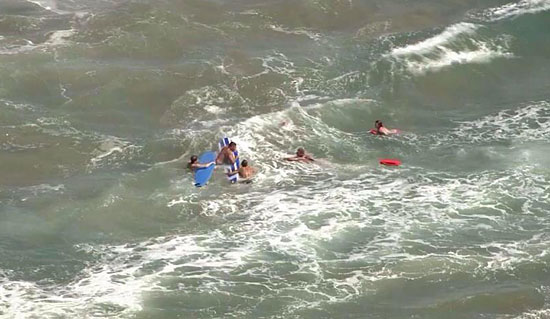
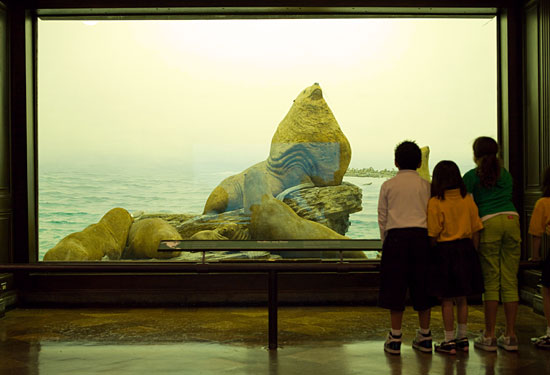
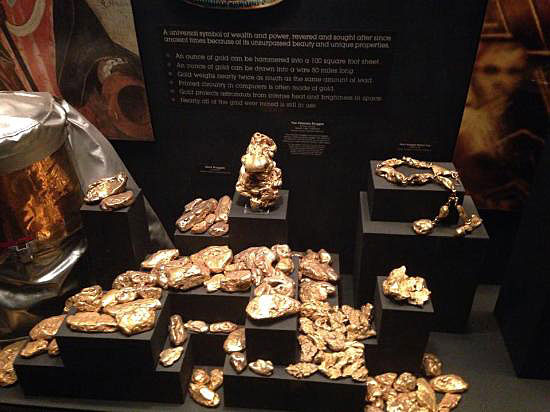
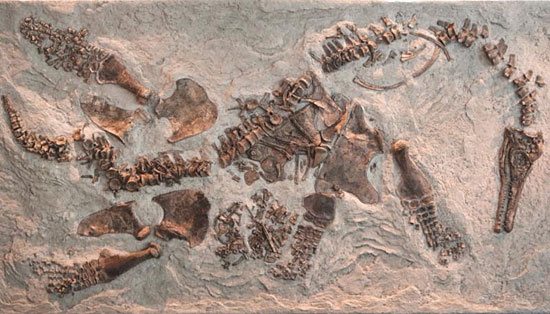
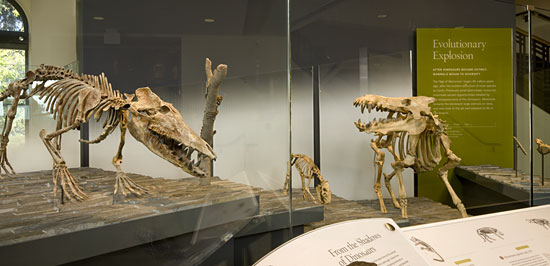
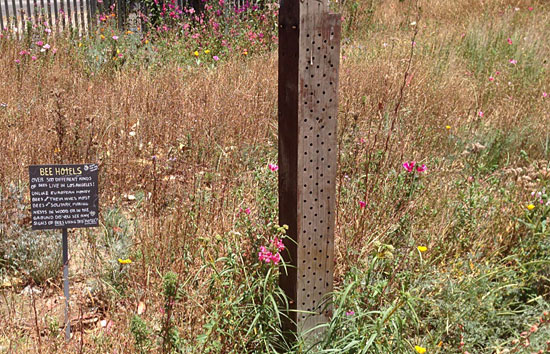
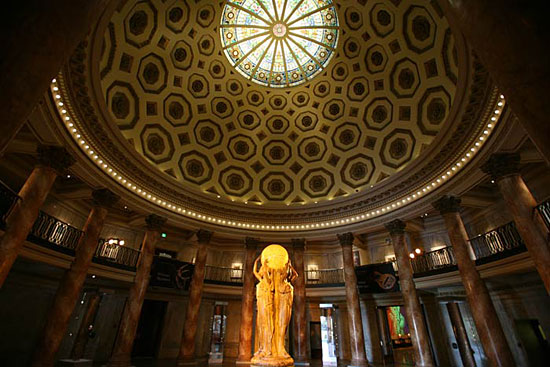
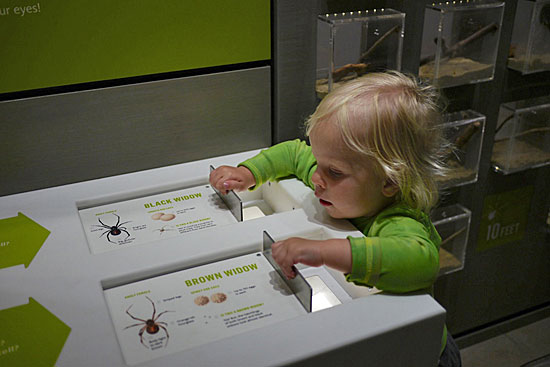





 Check for the latest closure information
Check for the latest closure information








